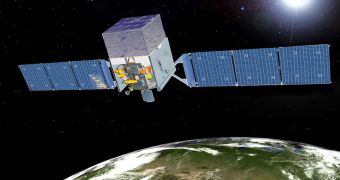Space is big enough that you'd think the few satellites we've put into orbit have plenty of room to maneuver. That's mostly true, but because there are so many of them moving so fast, their paths occasionally cross.
And because space is so big, it's hard to know in advance exactly where any of the tens of thousands of objects orbiting our planet is going to be.
It's even rarer for scientific satellites, especially the ones designed to look outward, to have problems with traffic.
But it does happen. A month ago, NASA's Fermi Gamma-ray Space Telescope had to perform evasive maneuvers to avoid a potential collision with a disabled Cold War era Russian spy satellite, Cosmos 1805.
NASA's Robotic Conjunction Assessment Risk Analysis keeps track of the satellites and objects circling the Earth and tries to predict their movements one week ahead. But these predictions are just that, predictions, they're not entirely accurate.
The initial numbers put Fermi within a couple of hundreds of meters of Cosmos 1805 at their nearest. The margin of error was too great to risk it. As time went by and predictions got more accurate, things started to look worse.
The two satellites would arrive at the same point in space within 30 milliseconds, it doesn't get any a nearer miss than this.
With the Russian satellite dead, Fermi had to get out of the way. But Fermi wasn't designed to move around; its thrusters were there to push it to its death towards Earth when its mission is over.
Because of the potential danger, the thrusters were never tested either. The actual maneuver was simple; running the thrusters for just one second was enough to push it well out of harm’s way.
The danger was in whether or not the thrusters themselves worked as they were supposed to. Luckily they did, and the two satellites passed within ten kilometers (six miles) of each other.

 14 DAY TRIAL //
14 DAY TRIAL // 